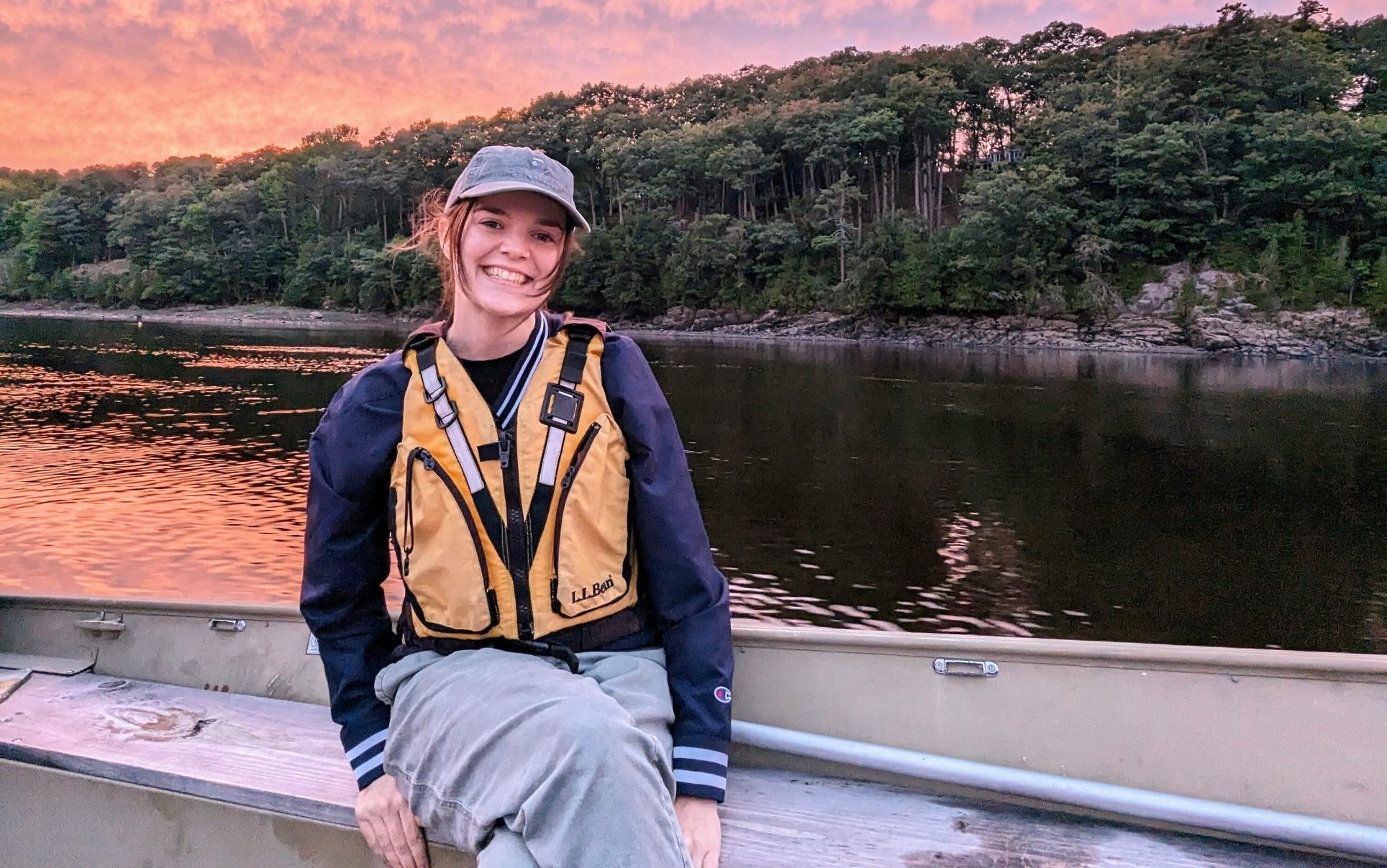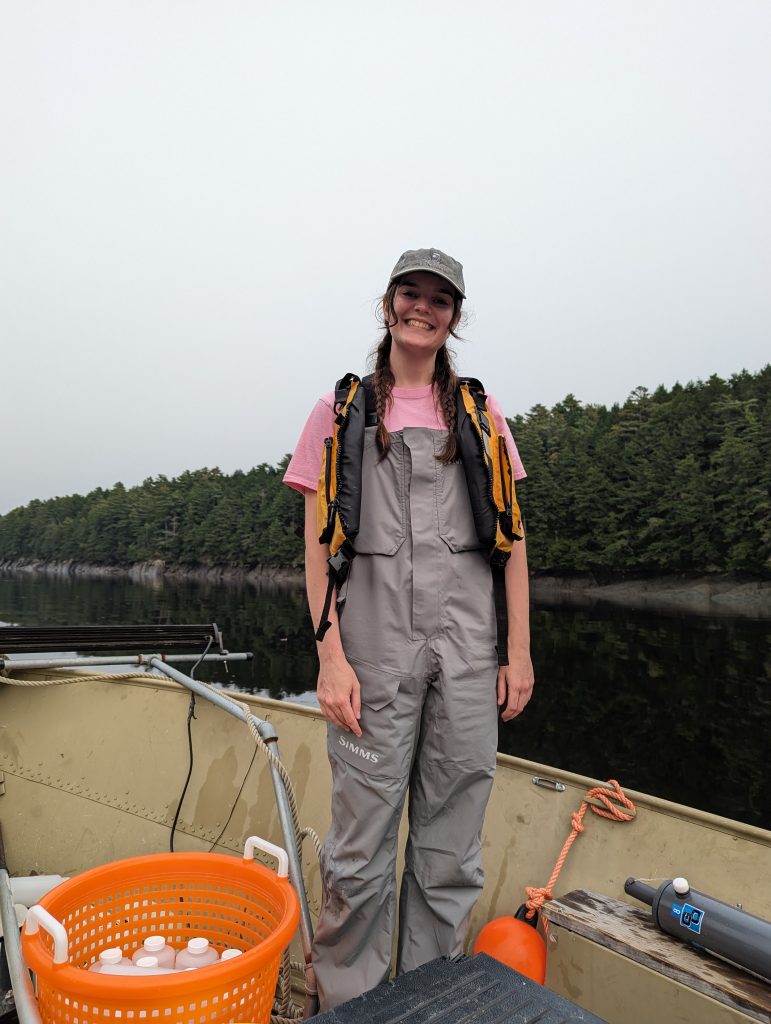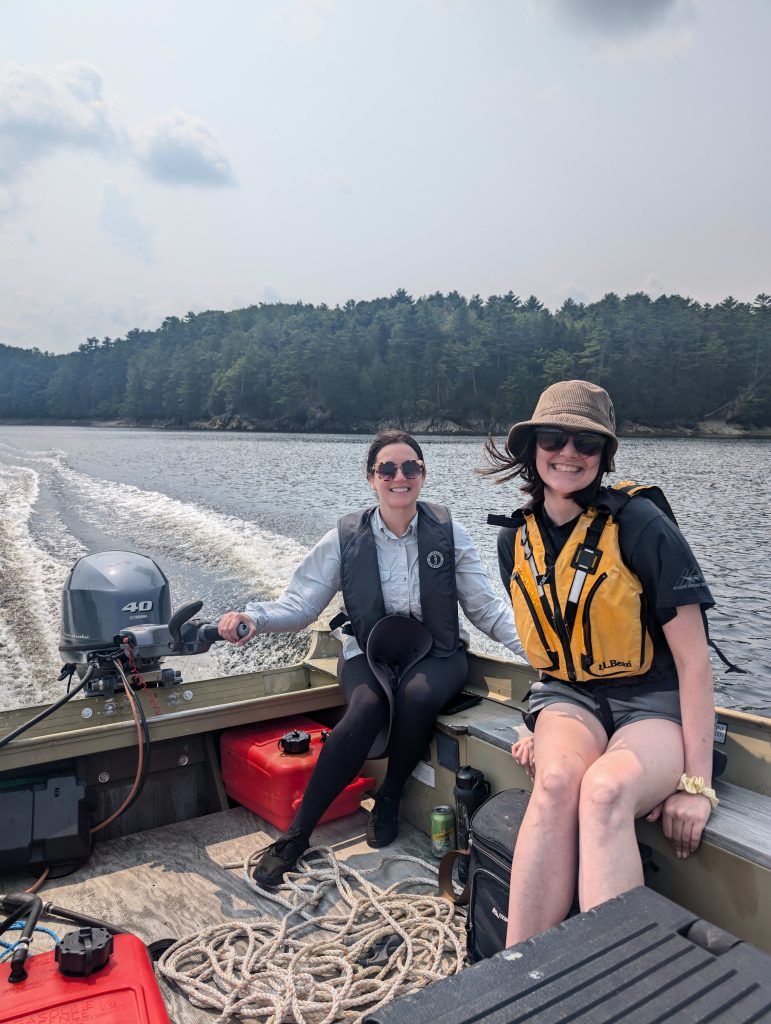
Vanessa Quintana: Understanding Contamination by Connecting Science and Community
If you had told me a few years ago that I would be living in Maine and studying how contamination moves through the tidal waters and affects sea-run fish, I probably wouldn’t have believed you. My journey to marine science wasn’t exactly traditional. I grew up in Kansas and earned my bachelor’s degree in Biological Sciences from the Missouri University of Science and Technology in 2020, where I was trained as a laboratory biologist. But my passion for water resources and aquatic ecosystems had always been there, and really solidified in 2018 when I interned at the Kansas City Zoo, working in the stingray exhibit. It was my first real exposure to a marine-related job, and it sparked a deep interest in research.
After graduating, I worked as a natural resources intern, caring for amphibians and reptiles while educating the public about conservation. I then began my master’s degree in Environmental Science and Policy at Johns Hopkins University, where I developed a strong foundation in spatial science and landscape ecology. During my master’s program, I worked as a GIS analyst at TRC Companies, mapping pipelines, and later as a research fellow at the NOAA Greater Atlantic Region Fisheries Office, where I developed GIS-based guidance for quantifying impacts in risk assessments. This experience led to a research fellowship with the U.S. Army Corps of Engineers at the Engineering Research and Development Center, where I gained a deeper appreciation for the connections between engineering, biology, and ecology. These fields are often studied separately but are fundamentally linked when assessing environmental risk and change. My work with NOAA and the Army Corps ultimately introduced me to my current advisor, Dr. Kim Huguenard, and set me on the path to the research I am pursuing today.

When I first learned about mercury contamination in the Penobscot, I knew I wanted to contribute to understanding the long-term risks to fisheries and the local communities that depend on them. Now, as a PhD candidate at the University of Maine, my research focuses on how hydrodynamic and tidal conditions influence the movement of contaminated sediments in the Penobscot River and how this contamination affects migratory fish. I am working to identify the times, locations, and environmental conditions where migrating fish face the highest exposure to contamination and how this exposure may impact their health.
Some of the most meaningful moments in my research have been in the field, witnessing firsthand the incredible species that rely on this system. Many of them interact daily with the very contamination I study. Analyzing data and models is important, but seeing the environment up close makes the significance of this work undeniable. Engaging with community members who are deeply concerned about the contamination has been another major motivator. Their questions and insights reinforce the importance of my research, not just from a scientific perspective, but as a critical issue for the community and the local economy.
One of the most significant shifts in my research has been recognizing the fundamental value of community knowledge and incorporating more participatory science. My collaborations with the Wampanoag Tribe of Gay Head (Aquinnah) reshaped how I approach environmental research, showing me that some of the most critical insights come not from scientific literature but from those who have lived alongside these ecosystems for generations. Working with the Tribe deepened my understanding of river herring and reinforced the importance of integrating Traditional Ecological Knowledge with Western science to create more inclusive and effective ecosystem management strategies.

This experience has directly influenced my approach to research and led me to organize an upcoming community workshop with the Penobscot Nation and local stakeholders. The goal is to co-develop an ecological model for the Penobscot River that brings together community knowledge and scientific data to better understand contamination risks. Beyond advancing research, I hope this model strengthens engagement between scientists and the people most affected by environmental changes, ensuring that research not only informs management decisions but also reflects the lived experiences and priorities of the community.
Environmental research is most powerful when it is collaborative, inclusive, and grounded in the knowledge of those who have lived alongside these ecosystems for generations. My work has shown me that bridging scientific research with community knowledge leads to stronger, more meaningful outcomes, both for conservation and for the people who rely on these resources. As I move forward, I am committed to ensuring that my research is not just about understanding environmental change but also about fostering connections between scientists, policymakers, and local communities.
If you are interested in learning more or getting involved with the upcoming community workshop on the Penobscot River in summer 2025, feel free to reach out to me at vanessa.mahan@maine.edu.
